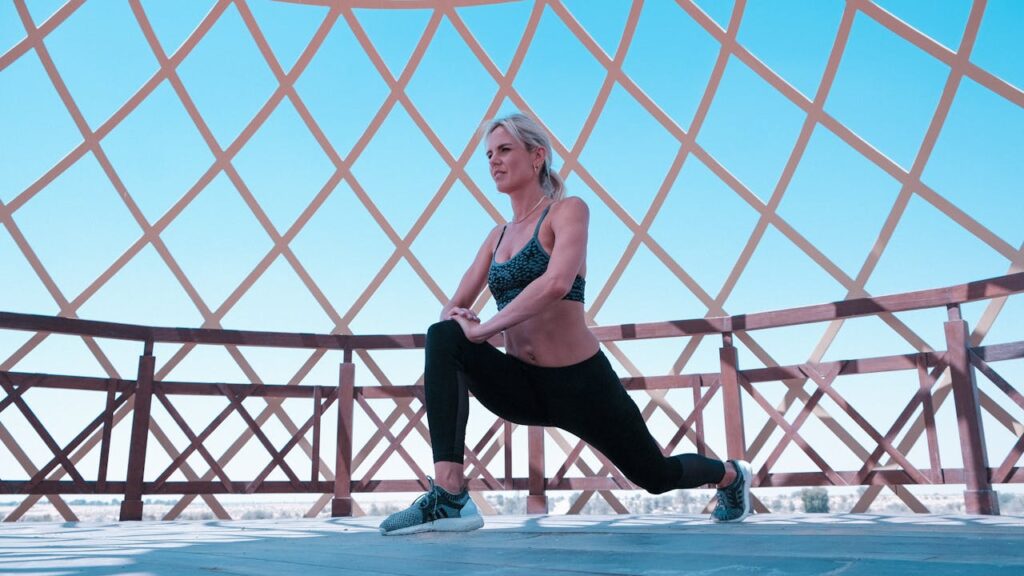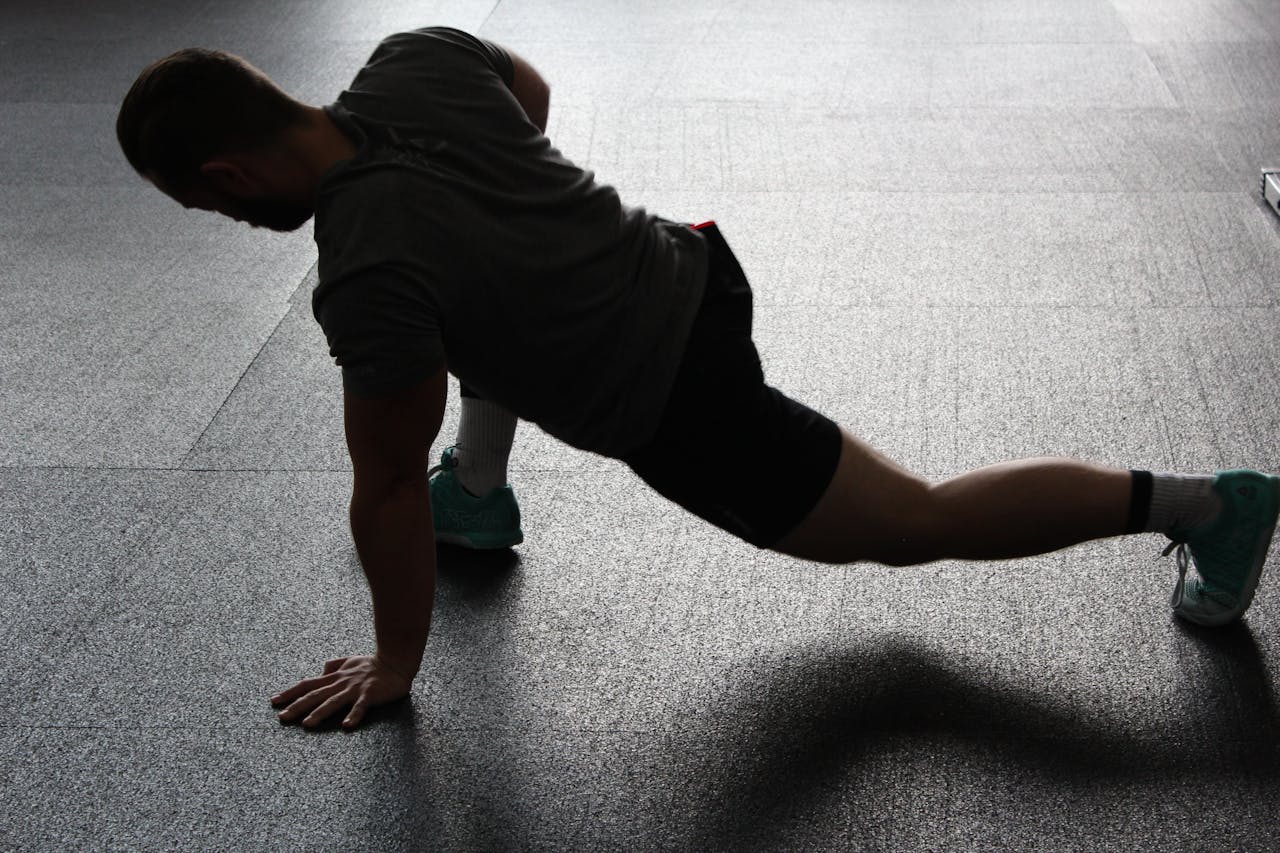Getting your body ready for a run is key to a safe and effective workout. Whether you’re a pro or just starting, warming up right can boost your performance and prevent injuries. We’ll look at different ways and exercises to get your body ready for the run ahead.
Key Takeaways
- Warming up before running is essential to prepare your body and prevent injuries.
- Dynamic stretching exercises target the major muscle groups used during running.
- Incorporating cardio warm-up activities like walking or light jogging can increase blood flow and body temperature.
- Running-specific drills like high knees and butt kicks help activate the muscles and improve form.
- Adapting your warm-up routine based on the duration and intensity of your run can help optimize your performance.
Why Warming Up is Crucial Before Running
Before you start running, warming up is key. It gets your body ready for the run, lowering injury risk and boosting performance. Knowing the value of a good warm-up and the dangers of skipping it is vital for your running journey.
Benefits of Proper Warm-Up Routine
A good warm-up offers many benefits. It boosts blood flow to muscles, improves joint mobility, and activates muscle groups for running. This leads to better muscle coordination, improved range of motion, and a lower risk of sprains or strains.
Consequences of Skipping Warm-Up
Skipping the warm-up can be risky. Without it, muscles and joints may feel stiff and inflexible, causing discomfort or even pain during the run. It also raises the chance of getting hurt, like pulled or strained muscles, which can keep you from training or racing.
So, warming up before how long should you warm up before running is essential for a safe and effective workout. By understanding the benefits and risks, you can make smart choices about your pre-run routine. This sets you up for success on the trail or track.

Preparing Your Body for the Run
Before you start running, it’s important to get your body ready. This step makes sure your muscles, joints, and heart are ready for the run. A good warm-up routine can improve your performance, lower injury risk, and make your workout more enjoyable.
The main parts of getting ready for a run include:
- Dynamic stretching to increase mobility and flexibility
- Light cardio to gradually elevate your heart rate
- Running-specific drills to activate the muscle groups used during running
Now, let’s look at each part to understand how to warm up before running. This will help you get the most out of your workout.
| Warm-Up Technique | Purpose | Example Exercises |
|---|---|---|
| Dynamic Stretching | Increase mobility and flexibility | Leg swings, arm circles, torso rotations |
| Light Cardio | Gradually elevate heart rate | Brisk walking, jumping jacks, jogging in place |
| Running-Specific Drills | Activate muscle groups used in running | High knees, butt kicks, skipping |
By adding these elements to your warm-up, you’ll be ready for a safe and effective run. Remember, warming up well can greatly improve your performance and prevent injuries. Take this important step and enjoy the benefits of a well-prepared body.

Dynamic Stretching Exercises for Runners
Getting ready for a run is more than just starting. Dynamic stretching is key for a warm-up. It makes your body more flexible and gets your muscles ready for running.
Lower Body Stretches
Work on your hips, legs, and calves. Here are some good dynamic stretches:
- High Knees: Lift your knees up towards your chest, alternating legs with each step.
- Butt Kicks: Bend your knees and kick your heels towards your butt, again alternating legs.
- Leg Swings: Swing one leg forward and back, keeping your core engaged. Repeat on the other side.
Upper Body Stretches
Don’t forget your upper body. Stretches for your shoulders, chest, and back are important. Try these:
- Arm Circles: Make small, controlled circles with your arms, rotating them both forward and backward.
- Ly Windmills: Reach one arm across your body, then the other, creating a windmill motion.
- Trunk Rotations: Twist your upper body from side to side, keeping your hips facing forward.
Adding different dynamic stretches to your warm-up can help you how to warm up before a run. It prepares you for a good and safe workout.
Cardio Warm-Up Activities
Getting ready for a run is more than just stretching. Adding light cardio to your warm-up can make you more ready for your workout. These activities raise your heart rate and blood flow. They help get your muscles and joints ready, reducing injury risk.
Low-Impact Cardio Options
Here are some low-impact cardio exercises for your warm-up:
- Walking – Start with a brisk walk to get your blood flowing and gradually increase your pace.
- Jogging in Place – Maintain a steady, moderate pace while lifting your knees to get your heart rate up.
- Elliptical Machine – Using an elliptical trainer can provide a low-impact, full-body warm-up without overexerting your muscles.
These cardio activities warm up your body, increase circulation, and prepare your muscles. By mixing dynamic stretching with these cardio exercises, you’ll be fully warmed up and ready to run your best.
How Long Should You Warm Up Before Running
Getting your body ready for a run is key to avoiding injuries and having a great workout. The length of your warm-up depends on your fitness level, the run’s intensity, and the weather. Experts suggest doing 5-15 minutes of dynamic stretching and light cardio before running.
Beginners or those coming back from a break should warm up for about 15 minutes. This helps your muscles warm up and reduces the risk of injury. Experienced runners might only need 5-10 minutes to get ready.
The type of run you’re doing also matters. For intense runs, you’ll need a longer warm-up. But for easy jogs, a quick 5-minute warm-up is enough.
The weather affects your warm-up too. In cold weather, your muscles need more time to warm up, so aim for a 10-15 minute warm-up. In warm weather, you can warm up for 5-10 minutes.
Your warm-up should get your heart rate and muscles ready for the run. Taking the time to warm up properly can help prevent injuries and make your run better.
Incorporating Running-Specific Drills
To make your warm-up better, add running-specific drills. These exercises get your muscles ready for running and make your form better. High knees and butt kicks are great drills to try.
High Knees
High knees are great for getting your legs and heart ready for running. Lift your knees up towards your chest quickly. This works your thigh and hip muscles.
Keep your posture right, engage your core, and move your arms like you’re running. This helps you stay in good form.
Butt Kicks
Butt kicks help get your body ready for running. Kick your heels back towards your glutes fast. This works the back of your legs.
Stay upright and avoid bending too much in your lower back. This keeps you balanced and safe.
Adding these drills to your warm-up can make you run better and safer. Start slow and get more intense as you warm up. Let your muscles get used to the movements.
How to Warm Up Before a Run
Getting your body ready for a run is key to a safe and fun workout. A good warm-up boosts your performance, lowers injury risk, and makes running more enjoyable. Here’s how to warm up before you hit the road.
Begin with dynamic stretches to prep your muscles. Target big muscle groups like legs, hips, and core. Try leg swings, hip circles, and torso twists to loosen up and get moving.
Then, move to a light cardio warm-up. This could be a fast walk, slow jog, or jumping jacks. It’s all about getting your heart rate up and warming your body. Spend 5-10 minutes on this to get your heart and body ready.
End with running-specific drills to fine-tune your form. High knees, butt kicks, and skipping are great for improving your running. They help get you ready to run.
By following this warm-up routine, you’re setting yourself up for a great run. Remember, warming up is an investment in your performance and health.
Adapting Your Warm-Up for Different Runs
When it comes to how to warm up before a run, you might need to change your routine. For shorter runs, a 5-10 minute warm-up is enough. But for longer runs, you should warm up for 10-15 minutes to get ready.
Warm-Up for Short Runs
For a quick run, a shorter warm-up works well. Do dynamic stretches for your legs, hips, and core. A few minutes of jogging or marching can also get your heart rate up and blood flowing.
Warm-Up for Long-Distance Runs
For longer runs, you need a longer warm-up. Start with dynamic stretches, then do some light cardio like jogging. Running drills like high knees can also help prepare your muscles and joints.
Always listen to your body and adjust your warm-up as needed. Proper preparation can help prevent injuries and improve your performance.
Conclusion
Warming up before a run is crucial. It’s not something to skip. A few minutes of preparation can boost your performance, lower injury risks, and make running more enjoyable.
Dynamic stretches, light cardio, and drills are key. They help raise your heart rate, improve flexibility, and get your muscles ready. Whether it’s a short jog or a long run, warming up is vital.
Listen to your body and adjust your warm-up accordingly. Tailoring your routine to your needs and fitness level is important. This way, you’ll be ready for success and enjoy your running journey fully.



